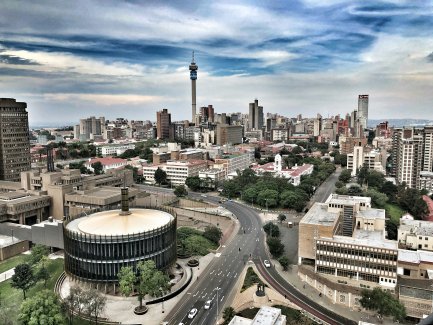Artikkelit

01.10.2025
South Africa: OECD report highlights South Africa s leading investment in education – alongside inequality and graduate unemployment
South Africa’s education system shows both strong investment and striking challenges, according to the OECD’s Education at a Glance 2025 report. The report provides a comprehensive overview of the country’s education landscape, with a particular focus on tertiary education. The report definition of tertiary education includes studies at bachelor’s, master’s and doctoral levels as well as short-cycle tertiary programmes, but does not include vocational education.
Unemployment paradox – higher education, higher unemployment rate
One of the most striking findings the report makes about South Africa is the counterintuitive relationship between education and unemployment. Unlike the OECD norm, where higher education typically leads to better employment prospects, South Africa shows an opposite trend. The unemployment rate is 38.8% among those without upper secondary education. It rises to 42.6% for those with upper secondary or post-secondary non-tertiary education and reaches 56.1% among tertiary-educated adults. This pattern suggests a significant mismatch between education outcomes and labour market needs. It means that many graduates hold degrees in fields with limited local demand. The South African economy is heavily reliant on informal and low-skill sectors, which absorb fewer graduates. Degrees may not guarantee job readiness, especially without practical experience. Structural barriers like limited job creation and slow economic growth disproportionately affect young graduates.
Limited access to advanced degrees
Access to higher levels of tertiary education such as master´s and doctoral programmes remains limited in South Africa. Only 1% of South African young adults (aged 25–34) hold a master’s or equivalent degree when the OECD average is 16%. Underlying reasons for limited access include the high cost of postgraduate studies, which are often self-funded, and low undergraduate completion rates, which restrict progression to higher levels.
Looking at the different fields of study, overrepresentation in business and humanities reflects perceived employability and accessibility, while STEM fields remain underdeveloped. Tertiary graduates are concentrated in the fields of business, administration and law (38%), arts and humanities, social sciences, journalism and information (16%) and STEM fields (15%). OECD average for STEM fields is 23%. Business and humanities degrees are often seen as more versatile and immediately applicable in South Africa’s service-oriented economy. These fields typically require less infrastructure and fewer resources than STEM programs, making them more feasible for under-resourced institutions. Many universities lack the labs, equipment, and faculty needed to scale STEM offerings. This pattern reinforces the need for strategic investment in STEM education to better align graduate output with long-term national development goals.
Declining international mobility
South Africa also diverges from global trends in student mobility. While international enrolment is rising across the OECD, South Africa has seen a decline from 3.6% in 2018 to 2.7% in 2023. Limited outbound mobility is one of the reasons behind the decline. Financial constraints and lack of institutional partnerships restrict South African students from studying abroad.
Strong investment - low per-student spending
South Africa invests 6.9% of its GDP in education, the highest among countries covered in the report and well above the OECD average of 4.7%. This reflects a strong national commitment to education. However, per-student spending remains relatively low as it is USD 3,108 per student (primary to post-secondary non-tertiary) and USD 11,504 per tertiary student (OECD average: USD 15,102). South Africa has a large youth population that stretches resources thin, and funding can be unevenly distributed across regions and institutions.
Education boosts earnings
The wage gap between education levels in South Africa is significantly wider than the OECD average. Workers with upper secondary education earn 46% more than those without. Tertiary-educated workers earn 251% more than those with upper secondary education. High-paying jobs in finance, law, and tech reward credentials. While education boosts income, it also widens gaps between those with and without access. Structural barriers mean that only a small segment benefits from these wage gains.
ELIAS HIRVIKOSKI
TFK-trainee, Lusaka
Links
Education at a glance 2025 (OECD).
Photo by Clodagh Da Paixao, Unsplash (Johannesburg city view)
